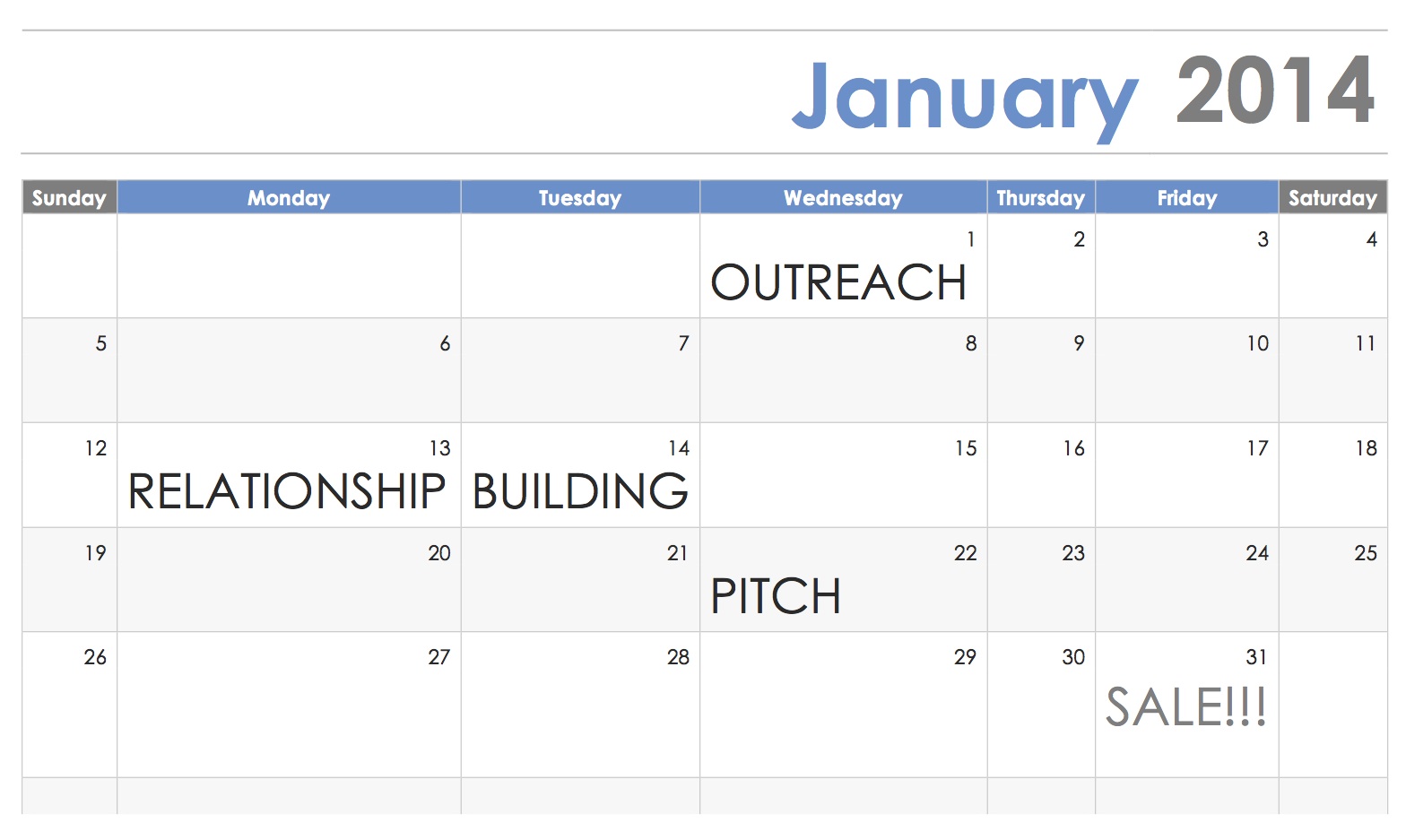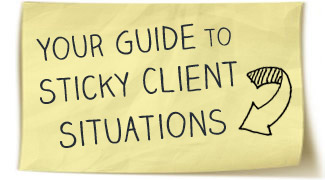
Having a firm grasp on your industry’s annual calendar – the natural ebb and flow of customer behavior throughout the year – can be the difference between a thriving business and living check to check.
One of the best ways to have a stable flow of income as a self-employed women is to market proactively, instead of responding to job ads and waiting for referrals or sub-contracted work.
But when you market haphazardly (calendar-wise), you run the risk of turning up dry unnecessarily.
Every business has a natural annual ebb and flow.
The classic example is the school year and school-related business and activities. In the late summer, everyone is in a frenzy to get ready for school: back to school sales, swim lesson sign-ups, teacher trainings, standardized test prep classes. The fall is a quick run up to December, and in the spring work slowly builds till the pre-summer climax before tapering off for the summer.
How Does This Work for Your Clients?
Identify which type of calendar they are on – and the marketing style you need to match it – and you’ll have an abundance of clients every marketing season.
Once you figure out the calendar for your industry, it’s a snap to sketch out your annual promotion efforts around your customers’ buying patterns and set up a marketing plan that gets results:
- Mark the time of year your prospects will naturally be in a buying mood (we’ll walk through that below) on a yearly calendar.
- Back up one month for ramp-up time.
- Add one more month for an initial meeting and negotiating a deal
- Note this as the point where you should be making your prospects an offer they can’t refuse (more about how to do this in our “10 Ways to Get Your Dream Clients” series)
- Back up three more months. This is where you should be making initial contact with your clients and getting them familiar with you, your brand, and the benefits of working with you.
The “On the Hunt” Approach
You should be most keenly on the hunt for new work when your clients are already receptive to your services. Personal trainers have identified well with this approach for years. In January, prospective clients may be looking to set up and start working on their New Year’s resolution to lose their baby weight, tone their arms, or train for a spring marathon.
But come late spring, it’s all about the mad rush to get ready for bathing suit season!
This the time to be booking your most packed schedule.
But if you don’t put in the groundwork to get in front of your customers and in their minds as the best provider of the solution to their needs in January — when they’re first thinking of their New Year’s fitness resolutions — or even back in November — when they decide to let go of their good habits for the holidays — they’ll turn to whoever else is most on their mind.
Who this works best for:
Individual-focused service providers like interior designers or coaches and personal trainers who capitalize on common goal-setting periods.
How to harness it:
- Look at your past years’ books (if applicable) and identify when you’ve traditionally had the most sales.
- Take a survey of past or prospective future clients to see what circumstances make them most feel like they could use your services.
- Step back a few months and calculate when your clients first begin feeling the seeds of these needs and set up a way to get in front of them and begin building a relationship during that time of year.
The Big Push Approach
If your services center on helping your clients with their clients, your calendar should revolve around the needs of the end client. Instead of examining when your ideal clients are “on the hunt,” you need to think about the end client.
EXAMPLE: Travel agents are a great illustration of this. No matter what their geographic area of expertise, travel agents in America are the busiest in the summer, when most people (especially families) are traveling.
If you are trying to get work managing social media for travel companies, and you reach out to a prospect in the summer or even spring, your email will languish in your prospect’s inbox while she’s busy fielding requests from her own clients – if it doesn’t go straight to the trash because she knows she can’t deal with it now.
But, if you hit a travel agent around November or December, when her high season has petered out and she’s looking at how to bring in that flush of spring business, she is 100% ready, willing, and excited to hear your proposal. After all, the top thing on her mind at that moment is creating future business. If you tell her how to do that, she’ll be all ears.
Who this works best for:
All types of business consultants and service providers.
How to harness it:
- Find your prospective client’s marketing materials.
- Examine them and look for trends like, do they come out with more press releases, blog posts, or sales during a particular time of year?
- Calculate when they are at their opposite capacity – the low point, when they are planning for their next big push. Approach them then.
The Budget Year Approach
Some clients – particularly corporations and non-profits – are rigidly stuck to their annual budgets, making it hard for new contractors to break in . . . unless you sneak into the budget.
One freelancer I spoke to reached out to a client to help freshen up their website, and he asked if she was available for on-going work. The next thing she knew, he wrote that he had put her in his budget for the next year to oversee the site and edit work by 30 staff members!
If she had contacted him just a week later, she would have missed the opportunity and he would have kept the task in house.
A key aspect of this approach is getting in front of your prospects and building need and desire well before the budget is written.
In these cases, especially with non-profits, budgets often undergo multiple reviews, meetings, and even hearings, so you need to get into the process early.
Who this works best for:
Service providers for mid-sized to large corporates and non-profits.
How to harness it:
- Head to a few prospective clients’ websites. Review the about pages, the press releases or investor reports sections in particular.
- Look to see when their main reports are released or when the fiscal year falls on financial documents.
It sounds like a long process, right? But we are talking about how to get long-term, on-going work from multiple clients with this strategy, not just bagging a single gig.
Figure out which type of calendar your prospects operate on, and they will feel like you’ve answered their prayers when you sign a deal . . . not just the other way around.
Still a little fuzzy? Seem like a lot of work? We eliminated some of the guess work and included a few helpful technology suggestions.
Here are some easy-to-use tools to help automate your strategy:
- Google Calendar. Set up appointments, create reminders, add tasks, or create a specific calendar to stay ahead of your prospective client’s busy season.
- Workflowy. Use this as a mind-mapping tool to flush out the various components of your strategy.
- Gmail. Gmail offers several labs and apps to simplify and streamline your communication including Canned Responses, and Boomerang.
Do you use an Annual Industry Calendar? Love or hate any tools that you’d like to share?
We’d love to hear from you.
Leave your comments below.
(Look out for our latest series, 10 Ways to Get Your Dream Clients. Coming soon).





